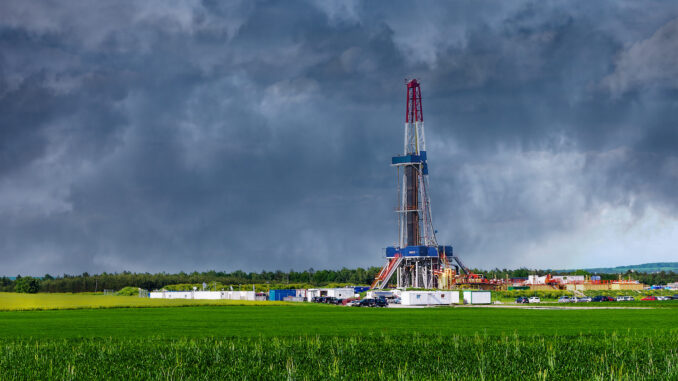
CSU study finds investment still growing
By Terry Troy
With SEMCORP’s recent investment in lithium-ion battery component manufacturing in Sidney, and Ford’s announcement last week that it was investing $1.8 billion in its Ohio Assembly Plant in Avon Lake to make electric trucks, one might think that Ohio is solely focused on electric energy.
Nothing could be further from the truth. We were reminded of that last week by the folks at JobsOhio who enlisted the help of Cleveland State Energy Policy Center at the Maxine Goodman Levin College of Urban Affairs to prepare a report on Ohio’s growing Shale Energy Industry.
The study revealed that, with previous investments to date, cumulative oil and gas investment in Ohio through June 2021 is estimated to be $95.3 billion. Of this, $65.9 billion has been in upstream, $21.4 billion in midstream, and $8.0 billion in downstream industries. Total investment in Ohio’s resource-rich shale energy sector was approximately $2.3 billion in the first half of 2021
The study also showed that cumulative shale investment has steadily risen over time between 2016 and 2021, particularly with upstream investments. Overall upstream investments were up by about $361 million in the first half of 2021 compared to the second half of 2020, reflecting higher royalty earnings due to higher oil and gas prices. Indirect downstream investment, such as the development of new manufacturing due to lower energy costs, was not investigated as part of this study.

“Ohio has developed the natural gas, natural gas liquids, and petrochemical supply chain industries to bring important jobs to hard-working Ohioans,” said J.P. Nauseef, JobsOhio president and CEO. “We have an exceptional opportunity to grow these important industries and establish Ohio as a major international player in shale-related productivity.”
“COVID, supply chain problems, and low gas prices presented significant challenges to the industry in the first half of 2021,” said Andrew R. Thomas, Director of the Energy Policy Center in the Maxine Goodman Levin College of Urban Affairs of CSU. “Even so, total investment, including midstream and downstream, was only down 4% from the second half of 2020. We anticipate that our next reports will show a marked increase in total investment.”
Upstream
Upstream activities, such as drilling, roads, and royalties, accounted for nearly $2.2 billion of this total investment. As determined from Ohio Department of Natural Resources Division of Oil and Gas (ODNR) data for shale well drilling, 74 new wells were drilled during the first and second quarters of 2021, six fewer than the number drilled in the second half of 2020. Jefferson County had the highest number of new wells with 36, followed Harrison and Monroe Counties, which had 13 and 10 new wells, respectively. Data also indicated that the total volume of gas-equivalent shale production in the first half of 2021 was 7% less than overall production in the second half of 2020.
Midstream
The first half of 2021 saw a steep decline in midstream investment compared to the second half of 2020, with no major pipeline development or processing capacity expansion as the COVID pandemic unfolded. However, more recently, rising commodity prices approaching 10-year highs will likely put upward pressure on investment spending across all-natural gas segments. The midstream spending that did occur in the first half of 2021 included gathering system buildout for pipelines ($29.1 million) and compression ($13.8 million).
Downstream
In downstream developments, two compressed natural gas refueling stations (representing a combined investment of $31.3 million) were installed by transit agencies in Cleveland and Columbus. Additional capacity expansion occurred at Marathon’s oil refinery in Canton, totaling an estimated $15.8 million.
This is the eleventh CSU study reporting investment resulting from oil and gas development in Ohio.



